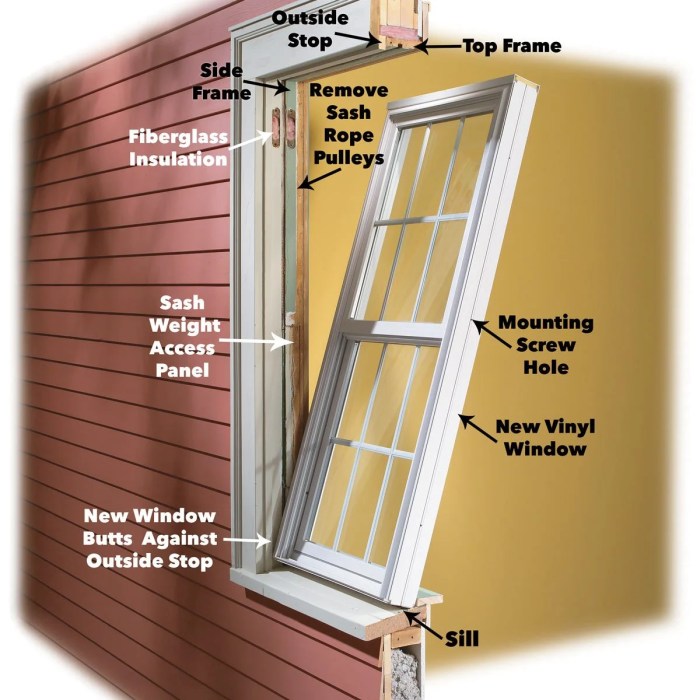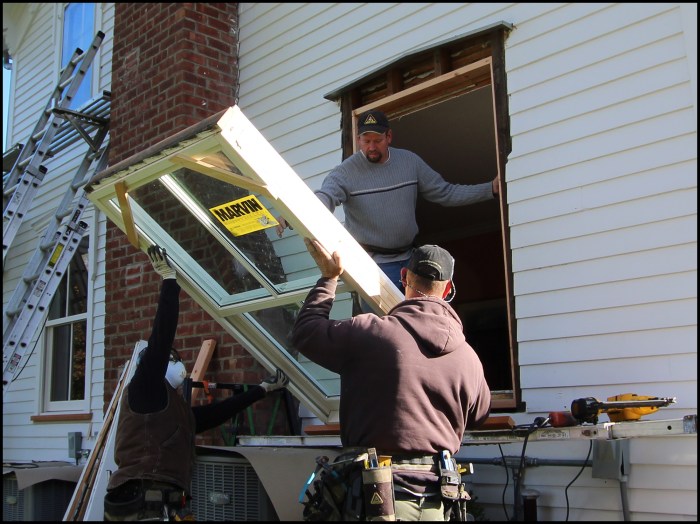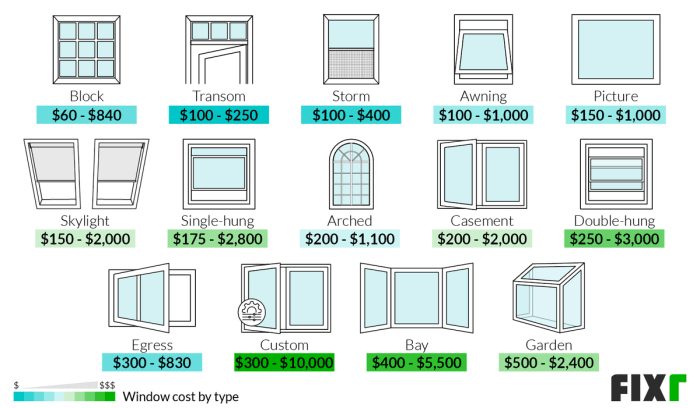Window Replacement vs Repair: What’s More Cost-Effective? sets the stage for this enthralling narrative, offering readers a glimpse into a story that is rich in detail with casual formal language style and brimming with originality from the outset.
When it comes to deciding between window replacement and repair, there are key differences that can impact cost-effectiveness and energy efficiency. Let's delve deeper into this important topic.
Window Replacement vs Repair
When it comes to maintaining your windows, you may face the decision between repairing or replacing them. Understanding the key differences and benefits of each option can help you make an informed choice.
Window Replacement
Window replacement involves installing entirely new windows in place of the existing ones. This option is more suitable in the following scenarios:
- If your windows are old and no longer energy-efficient, replacing them with new, energy-efficient models can help reduce heating and cooling costs.
- In case of severe damage, such as broken glass or warped frames, replacing the window entirely may be more cost-effective than trying to repair it.
- When you want to update the look of your home with new window styles or materials, opting for replacement can provide a fresh aesthetic appeal.
Window Repair
Repairing windows can offer several benefits compared to replacement:
- Cost-Effective: Minor issues like seal failures, hardware problems, or drafty windows can often be fixed through repairs, saving you money compared to the cost of full replacement.
- Preservation: Repairing windows can help preserve the original character of your home, especially in historic properties where maintaining the authenticity is crucial.
- Sustainability: By repairing windows instead of replacing them, you reduce waste and contribute to environmental sustainability by extending the lifespan of the existing materials.
Cost Considerations

When it comes to deciding between window replacement and repair, cost is a significant factor that homeowners consider. Let's delve into the comparison of costs associated with both options and explore the factors that influence their cost-effectiveness.
Cost of Window Replacement vs. Repair
- Window Replacement: The cost of replacing a window can vary depending on factors such as the size of the window, the type of material used, and the complexity of the installation process. On average, the cost of replacing a window can range from $300 to $1,000 per window.
- Window Repair: Repairing a window is generally more cost-effective than replacing it. The cost of window repair can vary based on the extent of the damage and the type of repair needed. Simple repairs like fixing a cracked glass or resealing a window can cost as low as $50 to $200.
Factors Influencing Cost-Effectiveness
- Extent of Damage: The extent of damage to the window plays a crucial role in determining whether repair or replacement is more cost-effective. Minor damages like small cracks or sealant issues can be easily repaired at a lower cost, making repair a more cost-effective option.
- Energy Efficiency: Energy-efficient windows can lead to long-term cost savings on energy bills. If your current windows are not energy-efficient, replacing them with new energy-efficient ones may be a more cost-effective option in the long run, despite the initial higher cost.
- Home Value: The impact of window replacement on the overall value of your home is also a crucial factor to consider. If new windows can significantly increase the value of your home, then replacement might be a more cost-effective investment.
Long-Term Cost Savings
- While window repair may seem more cost-effective in the short term, it's essential to consider long-term cost savings. Energy-efficient windows can help reduce heating and cooling costs, resulting in significant savings over time. In this case, window replacement may be a more cost-effective option in the long run.
- Additionally, investing in high-quality windows that require minimal maintenance can also lead to long-term cost savings by reducing the need for frequent repairs or replacements.
Energy Efficiency

Replacing windows in a home can have a significant impact on energy efficiency. New windows are often designed with advanced technologies that help to better insulate the home, reducing the amount of heat transfer between the inside and outside. This can lead to lower energy bills and a more comfortable living environment.
Improved Insulation
Energy-efficient windows typically feature multiple panes of glass, gas fills between the panes, and low-emissivity coatings. These components work together to minimize heat transfer, keeping the indoor temperature stable and reducing the workload on heating and cooling systems.
Repairing Windows for Energy Efficiency
While repairing windows can address issues like drafts and leaks, it may not provide the same level of energy savings as replacing them with more modern, energy-efficient options. Repairing old windows might improve their functionality, but they may still lack the advanced features that new windows offer for better insulation.
Energy-Efficient Window Options
- Double or triple-pane windows with low-e coatings
- Gas-filled windows with argon or krypton
- High-quality framing materials like vinyl or fiberglass
- Windows certified by ENERGY STAR for optimal energy performance
Environmental Impact
When it comes to the environmental impact of window replacement versus repair, there are several factors to consider. Let's delve into the sustainability aspects of choosing repair over replacement and explore the use of eco-friendly materials in window replacement.
Sustainability of Repair over Replacement
Opting for window repair instead of replacement can have a positive impact on the environment. By repairing existing windows, you are reducing the amount of waste that ends up in landfills. This helps in conserving resources and reducing the overall carbon footprint associated with manufacturing new windows.
Eco-Friendly Materials in Window Replacement
Many window replacement options now include eco-friendly materials that are sustainable and energy-efficient. Some examples of these materials include:
- Low-E glass: Low-emissivity glass helps in reducing heat transfer, thus improving energy efficiency.
- Vinyl frames: Vinyl is a recyclable material that requires less energy to produce compared to other window frame materials.
- Fiberglass frames: Fiberglass is a durable and energy-efficient material that can be recycled at the end of its lifespan.
Closing Notes

In conclusion, weighing the costs and benefits of window replacement versus repair is crucial for homeowners looking to enhance their living spaces. Making an informed decision based on factors like long-term savings and environmental impact can lead to a more cost-effective and sustainable choice.
General Inquiries
Is it always more cost-effective to repair windows instead of replacing them?
Not necessarily. In some cases, especially when dealing with extensive damage or outdated windows, replacement might be the more cost-effective option in the long run.
Can repairing windows offer similar energy-saving benefits as replacement?
Repairing windows can improve energy efficiency to a certain extent, but replacement with energy-efficient options tends to provide more substantial energy-saving benefits.
What are some eco-friendly materials used in window replacement?
Materials like recycled glass, fiberglass, and wood certified by sustainable forestry programs are commonly used in eco-friendly window replacements.
How do factors like location and climate influence the cost-effectiveness of window replacement?
Regions with extreme weather conditions or high energy costs may see more cost savings from energy-efficient window replacements compared to repairs.














